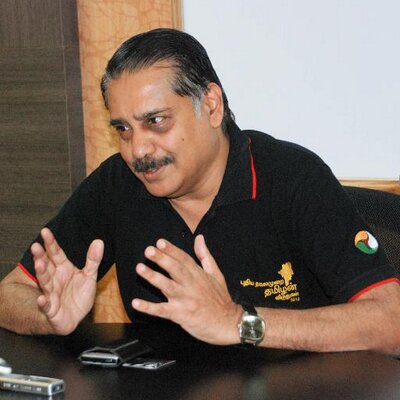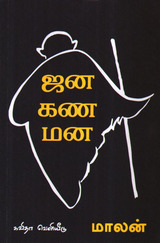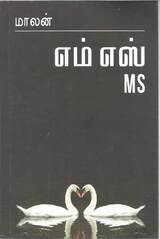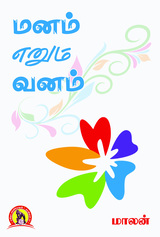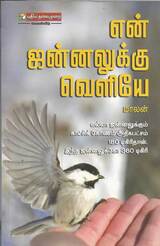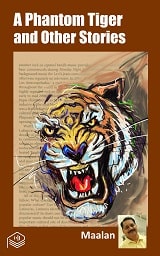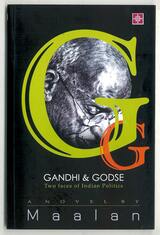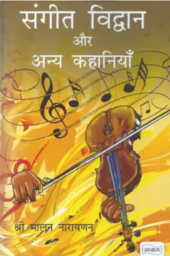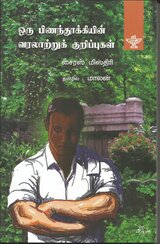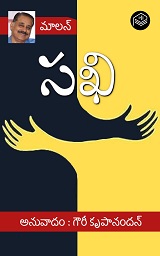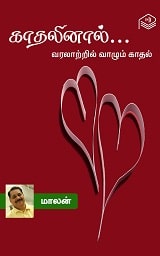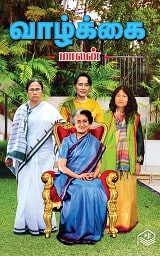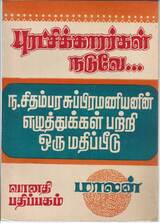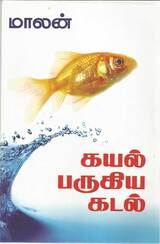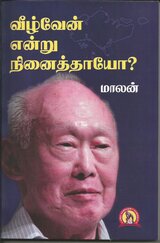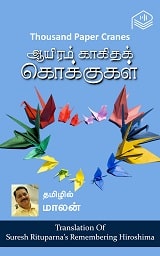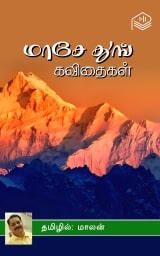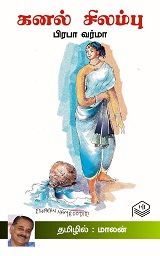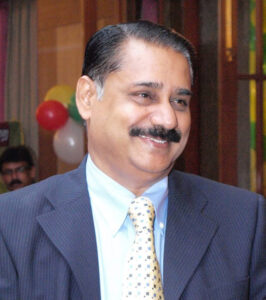
| Development of Indic Language Computing, through his association with INFITT and as Validator of MicroSoft Office-Tamil Mr. Maalan V Narayanan is a journalist and writer of repute. The person behind Thisaigal – the first Unicode based Tamil e-zine, he has been actively involved in the development of Indic Language Computing, through his association with INFITT and as Validator of MS Office-Tamil. Currently, Editor–Sun News Channel, he shares his experiences and thoughts in a freewheeling interview on the development and future of Indic Language Computing Tell us something about your childhood and the influences that made you take up journalism as a career? M: I grew up in the legendary temple town, Madurai, which was also the seat of Tamil Scholarship during the Sangam Age (8th Century AD). Sangam was an institution of Tamil academics, under royal auspices, that promoted intellectual exchanges, evaluated literary works and set standards. Mahakavi Subramania Bharathi started his career at Madurai as a Tamil teacher in a school. Incidentally, many years later, I attended that School. Tamil and Literature were a part of the heritage of the place I happened to live in my formative years. I was born in a middle-class family that considered education and knowledge to be assets. My father, a senior bank official, was a voracious reader and my mother was an ardent admirer of Poet Bharathi and Tamil poetry. On many occasions, our dinner table discussions used to revolve around books, stories and writers. I assumed, at that young age, that households discuss writers and writers as a celebrated lot. At 13, I started trying my hands at poetry and launched a ‘manuscript magazine.’ One day, I was caught red-handed while working on a poem for my magazine, in class. To my surprise, I was praised, not admonished. I then decided that I would become a writer, but my parents insisted that I should emulate my grandfather and become a doctor. I couldn’t get a medical seat but was admitted for the bachelor degree in pharmacy. Away from home, from my hostel room, my writing continued. My poems and stories started appearing in literary journals while I was in college and very soon, I was recognised as a writer, even before I had completed my degree! But I realized my childhood passion of becoming a journalist only when I was touching 30. You are a journalist and a writer of international fame and repute. Where did your interest in Indic Language Computing stem from? M: When I attended the University of Florida for my Masters in Journalism, my project involved creating a prototype for an electronic newspaper. There were not many browsers at that time and we were working with a software – Mosaic – borrowed from a national research institute. The possibility of an electronic newspaper in English triggered a question in my mind – “How about one in Tamil.” I expressed my thoughts to a friend in Singapore, Dr Na. Govindasamy, who was developing Tamil fonts at that time. Tamil on the Internet became a reality, but experienced a lot of hitches, primarily because of the lack of standardized encoding. Encoding debates didn’t interest me and I believed that they ran counter to the very philosophy of the Internet – global access to information. So I played the wait-and-watch game. With the arrival of Unicode, my hopes were revived and I decided to take the plunge again. I launched Thisaigal – the first Unicode based Tamil e-zine. That was the beginning of my long-standing relationship with Indic language computing. How did your association with INFITT come about? M: I was drawn towards INFITT because of its global outlook. INFITT is the only global organization with representatives from various regions, working in the area of Information Technology in Tamil. Incidentally, it is an organization founded and nurtured by the pioneers of Tamil computing. You were the validator of MS Office in Tamil and the Moderator of its Glossary of IT terms in Tamil. What were the initiatives undertaken by the INFITT to create the glossary? M: Much before the CGW initiative, INFITT embarked on the mission of compiling and standardizing Tamil IT terms. A working group was formed on July 23, 2000. Tamil academics, (including the former Vice-Chancellor of Anna University) and IT professionals drawn from various countries constituted the working group. What were the challenges faced by you and the working groups in accomplishing your goals? M: Tamil is a language, ancient in origin and modern in use. It has weathered many centuries and acquired a rich cache of terms over the years. Tamil civilization has many technical feats to its credit (apart from its temples) and certain expressions are used in classical literature. Looking for an appropriate term, therefore, was not too difficult. In fact, there were many expressions and many explanations. And that was more challenging – to zero in on a term that describes the technical aspect correctly and yet is closer to common usage. In short, this was a case of plenty, not paucity!. How was the response of the Tamilians abroad to this project? M: They welcomed these initiatives enthusiastically. Some of them contributed actively towards the project. They were happy to see their mother tongue entering their own technical vistas. It is akin to your mother visiting you when you are working abroad! You are also the editor of Min Manjari, the official technical journal of INFITT. What is the role played by Min Manjari in the dissemination of Tamil Language Computing? M: The primary objective of Min Manjari is to provide a forum to exchange technical notes on the various facets of Tamil IT and to place them for review. It is a bi-lingual magazine but encourages writing in Tamil. In the process, it enthuses technocrats to use Tamil as a medium for their expression. At a later time, if the articles of Min Manjari were compounded into a book, it would educate the computing community across the world on the various initiatives in Tamil Computing. How does INFITT identify key application areas for the development of Tamil Information Technology? What are the future projects that will be undertaken by it? M: A substantial section of INFITT members are technocrats and developers. We exchange ideas through mail groups. Any member can suggest ideas or make requests to working/ discussion groups by either writing to the Executive Director or to the “gbinfitt” (General Body-INFITT) mail group. The Executive Committee will consider the suggestion and initiate the formation of the WG/DG. The WG/DG is expected to submit a final report to the Executive Committee and the EC in turn will place it before the General Body with its recommendations. INFITT, in its early years, was substantially involved in aspects of encoding, standardization, and the Internet. In recent times, it has turned its attention to new technologies like the use of Tamil in mobile media (cellular phones, PDAs), speech recognition, Linux, open-source initiatives and more. As a journalist, in what capacity do you see journalists being involved in the dissemination of Indic Language Computing? M: Technology and the language are the two tools journalists employ in their work almost every day, every hour. This gives them a better insight into these tools. Most of them interact with the community as a part of their vocation. This gives them the opportunity of spreading the message of Indic Language Computing as compared to technocrats and corporate evangelists. In my opinion, journalists have a major role and social responsibility in spreading knowledge about Indic Language Computing. Do you think organizations like INFITT should be encouraged in every state to lead the way for Regional Language Computing? M:I personally feel initiatives are needed to build organizations at the grassroots level to kindle and sustain interest in Indic Language Computing. There is a whole new generation that needs to be addressed. But INFITT is a global body of professionals with a centralized structure. Handling regional needs is non-practicable at the moment. However, I hope that one day we will have regional units. It already has chapters in Europe, North America and Sri Lanka and in the future is planning student chapters. What role should the government adopt in its support of organisations like INFITT? M: Various governments have already extended generous support to INFITT’s initiatives. The Singapore Government was kind enough to support the Secretariat for almost 4 years. It also supported the Tamil Internet Conference held in 2000. The Tamil Nadu Government played host to the Tamil Internet Conferences in 1999 and 2003. Tamil leaders in the Malaysian Government also supported the Tamil Internet Conference of 2001. Apart from the financial support, Governments have participated in these conferences through their institutions and experts. However, there is definitely a need for more help. Governments can help us with logistic support, manpower for the secretariat and of course, conference facilities. What in your opinion should be the role played by the print and tele-media in developing and spreading Indic Language Computing? M: These larger media hold the key in the dissemination of information on Indic Language Computing. Many are still not aware of the tools available for computing in one’s own language and if and when they are informed, it will trigger an avalanche of interest and enthusiasm. I would like to share a personal experience here. My web magazine Thisaigal published an article on blogging in Tamil availing Unicode in July 2003. At that time, there were less than 10 bloggers in Tamil. Now within 2 years, there are more than 500 bloggers inTamil and most of them have acknowledged the Thisaigal article as the precursor and trigger to their blogs. Some of the bloggers have developed accessories and tools like RSS Feed, XML, text editors, converters for blogging and have put up these facilities on their blogs. Most of them have come together under a common umbrella and this ensures regular readership on their blogs. If a small web magazine can trigger this kind of imagination and participation, larger media like press and television can make a tremendous impact. Microsoft has been a pioneer in spreading Indic Language Computing through its Bhasha India Portal, its various other projects and the enabling of multilingual applications of its various products. In what capacity should Indian Companies step into this scenario and what should be their role? M: The Bhasha India project is a path-breaking initiative. The common man is under the impression that a comprehension of the English language is a must for computing. Despite the efforts of small-scale developers, the average person is still under the impression that computing in an Indian language involves some sort of a ‘manipulation’ and is not feasible on every computer. The arrival of Microsoft ushers in the confidence and conviction that language computing is a reality. Indian companies should step in to take this forward now. Technologies that suit the emerging environ like speech-to-text processing, machine translations, e-commerce, e-schools, telemedicine, and database management for e-governance are the need of the hour and Indian companies have to take initiatives in these directions. Being a writer, do you think more literary works should be encouraged that reach out to the grass-roots level to spread Indic Language Computing? M: The common identity of a language is its literature. When literary works reach the community through Indic Language Computing, it instils confidence in technology. The digital version of a literary work will encourage writing. Blogs have proved this. For the writer, it is a matter of pride and an opportunity. Now readers located at a distant village have to compute all the way to the nearest town to browse or buy a book of their favorite writer. Imagine a kiosk having Indic Language facility and internet connectivity. The reader can search, browse and even read a sample by keying in the name and title of a favorite author, in the preferred language! Indic Language Computing is here to make miracles happen! |
https://bhashaindia.com/Patrons/SuccessStories/Pages/Maalan.aspx

